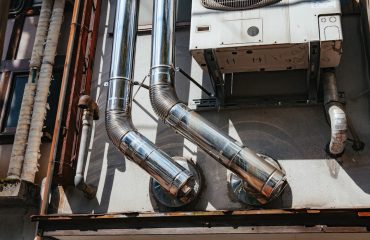Stainless steel. The name itself evokes images of durability, elegance, and hygiene. But with so many different types and grades available, choosing the right stainless steel product for your needs can feel overwhelming. This comprehensive guide will demystify the world of stainless steel, helping you navigate the options and make informed decisions.
Understanding Stainless Steel Grades: A Deep Dive into Composition
The properties of stainless steel are dictated by its composition, primarily the percentage of chromium. Chromium forms a passive layer of chromium oxide on the surface, protecting the steel from corrosion. Different grades of stainless steel contain varying amounts of chromium, nickel, molybdenum, and other alloying elements, resulting in distinct characteristics. Here are some key grades:
- 304 (18/8): This is the most common grade, offering excellent corrosion resistance and formability. It’s widely used in kitchenware, appliances, and architectural applications.
- 316 (18/10): Containing molybdenum, 316 stainless steel exhibits superior resistance to chloride corrosion, making it ideal for marine environments, chemical processing, and medical devices.
- 430: A ferritic stainless steel, 430 is less expensive than austenitic grades (like 304 and 316) but offers good corrosion resistance in less demanding applications. It’s often used in automotive parts and appliances.
- 410: A martensitic stainless steel known for its high strength and hardness after heat treatment. Commonly used in cutlery and tools.
Understanding these grades is crucial for selecting the right stainless steel for your specific application. Consider the environment, the required strength, and the level of corrosion resistance needed.
Common Applications of Stainless Steel: From Kitchen to Construction
The versatility of stainless steel is truly remarkable. Its wide range of properties allows it to be used in a vast array of applications across numerous industries. Let’s explore some key sectors:
- Food Service and Kitchenware: The hygiene and corrosion resistance of stainless steel make it a perfect choice for cookware, utensils, food processing equipment, and restaurant fixtures.
- Architecture and Construction: Stainless steel is used in building facades, roofing, structural elements, and handrails due to its durability, aesthetic appeal, and low maintenance requirements.
- Medical Devices: Biocompatibility and corrosion resistance are vital in medical applications. Stainless steel is used in surgical instruments, implants, and other medical devices.
- Automotive Industry: Stainless steel’s strength and corrosion resistance make it suitable for exhaust systems, body panels, and other automotive components.
- Chemical Processing: The resistance to many chemicals makes stainless steel a preferred material for tanks, pipes, and other equipment in chemical plants.
This is just a glimpse of the vast applications of stainless steel. Its adaptability continues to drive innovation across various sectors.
Choosing the Right Stainless Steel: Factors to Consider
Selecting the appropriate stainless steel involves careful consideration of several factors:
- Intended Use: The application dictates the required properties. A kitchen sink needs corrosion resistance, while a surgical instrument requires biocompatibility.
- Environmental Conditions: Exposure to chemicals, salt water, or extreme temperatures will influence the choice of grade.
- Budget: Different grades have varying costs. Choosing a less expensive grade might be appropriate for less demanding applications.
- Aesthetic Requirements: Surface finish, color, and reflectivity are important considerations for aesthetic applications.
- Formability and Weldability: These factors are crucial for manufacturing processes.
Thorough consideration of these factors will ensure you select the optimal stainless steel for your specific needs.
Caring for Your Stainless Steel Products: Maintenance and Cleaning
Proper care will extend the lifespan and maintain the beauty of your stainless steel products. Here are some essential tips:
- Regular Cleaning: Use mild soap and water for regular cleaning. Avoid abrasive cleaners that can scratch the surface.
- Stain Removal: Address stains promptly. Many stains can be removed with a paste of baking soda and water.
- Preventing Water Spots: Dry your stainless steel surfaces after cleaning to prevent water spots.
- Protecting from Scratches: Use soft cloths and avoid abrasive materials when cleaning or handling.
- Specific Cleaning Products: For stubborn stains or heavily soiled areas, consider using specialized stainless steel cleaners.
Following these simple guidelines will help keep your stainless steel products looking their best for years to come.
The Future of Stainless Steel: Innovations and Trends
The development of new stainless steel grades and manufacturing processes continues to push the boundaries of this versatile material. Current trends include:
- High-Strength Stainless Steels: These grades offer increased strength and reduced weight, making them ideal for structural applications.
- Advanced Surface Treatments: New surface treatments enhance corrosion resistance, aesthetics, and hygiene.
- Sustainability Initiatives: The industry is focusing on sustainable manufacturing practices and the use of recycled stainless steel.
- Additive Manufacturing: 3D printing is opening up new possibilities for complex shapes and customized designs.
The future of stainless steel is bright, with ongoing innovation promising even greater performance and wider applications.
This comprehensive guide provides a solid foundation for understanding and selecting the right stainless steel products. Remember to carefully consider the factors discussed to ensure you make the best choice for your specific application.
Tags: stainless steel, stainless steel guide, stainless steel types, stainless steel grades, stainless steel applications




